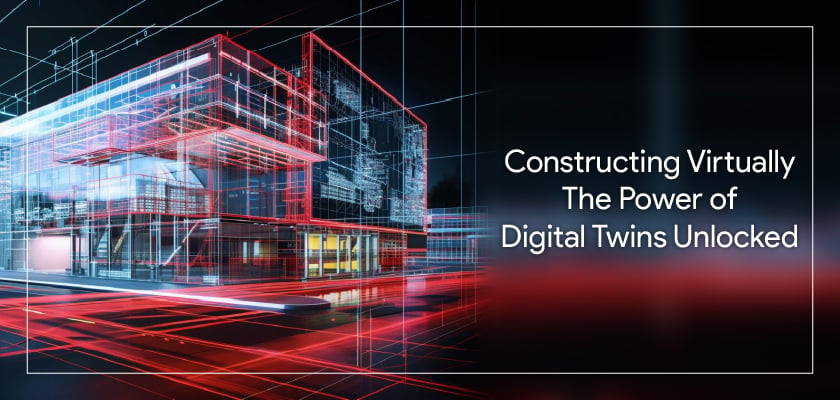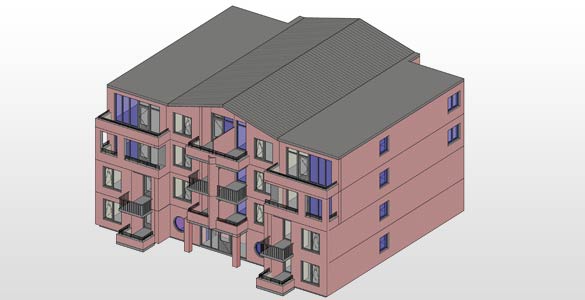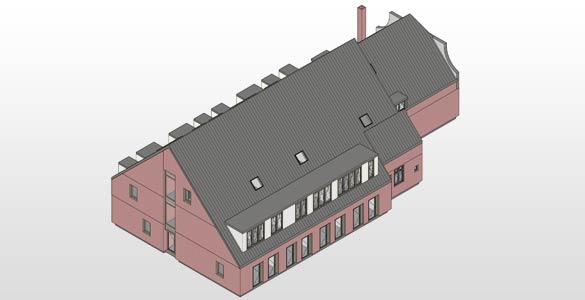
Digital twins in virtual space offer several improvements for the AEC industry including optimized design, performance prediction, enhanced collaboration, and real-time insights to improve cost-efficiency and expedite project delivery.
Digital twins refer to a real-time, virtual representation of a physical counterpart used in the Architecture Engineering Construction (AEC) field. The integration of real-time data, gathered through various IoT devices, allows these digital models to simulate the real-world conditions of their physical counterparts accurately.
Despite their potential, integrating digital twins in AEC isn’t without challenges. The complexity of digital twin data integration, the need for sophisticated digital twin software tools, and the transformation of traditional workflows are some of the hurdles faced.
However, once integrated with BIM services, their benefits, including automation services for buildings, and accurate comprehension of design and building operations, significantly outweigh these challenges.
Table of Contents
The primary challenge in using digital twins lies in creating accurate and dynamic digital representations of construction projects that are synchronized with real-time data. This requires seamless data integration, which can be technologically demanding.
Technical Barriers such as lack of skilled resources and interoperability issues pose major obstacles. Building and maintaining a digital twin requires knowledge of IoT, AI, and data analytics, which is hard to find. Integrating data from different systems, each with its own unique data format and standards, is not simple.
Data Security and Privacy poses another challenge. As digital twins use data about physical assets and their environment, ensuring data security is a critical issue. Regulatory compliance in data privacy poses a challenge, as laws differ across regions. Deploying strategies such as encrypting data, implementing access controls, and keeping software up to date helps protect digital twin data.
Implementing digital twins in construction projects involves creating precise 3D BIM replicas of physical environments and processes to enhance project design. Construction firms use these replicas to minimize job site footprints, improve safety, and speed up workflow processes.
Initial planning and assessment
Selecting appropriate digital twin software tools
Integration of IoT devices
Creating the digital twin model
Data integration and analysis
Ongoing management and updates
In the later phases, process models are used to diagnose project bottlenecks, predicting work progress, and optimizing resource allocation. These practices are highly beneficial during the construction and operational stages of a project.
3D digital twins with NEN2580 compliance keeps project cost well within the stipulated budget.
Here’s an example of how NEN2580-compliant digital twins helped a Social Housing Corporation in Netherlands meet government mandate within a stringent deadline.
A leading real estate company in the Netherlands needed to create digital twins for their residential properties as per government mandates. They partnered with Hitech CADD Services to get 3D digital twins for 10,000+ residential units, in compliance with NEN2580 standards.
The digital twins created by the team of experts at Hitech CADD Services enabled the client to meet the Netherlands government property standards mandate. The digitized real estate portfolio also helped in facility management of their residential properties.
 Final Deliverables in Dynamo Parameter Test
Final Deliverables in Dynamo Parameter Test
 Final Deliverables in Dynamo SOR Test
Final Deliverables in Dynamo SOR Test
While often mentioned in the same breath, digital twins and building information modeling (BIM) serve distinct functions. BIM provides a detailed and data rich 3D model of a building’s design and construction, whereas digital twins extend this concept through the entire lifecycle of a project, incorporating dynamic data and offering post-construction insights.
Digital twin technology goes deep into the interaction of people with the constructed environment in real-time. It offers an extensive understanding of system efficiency and potential bottlenecks.
The primary use of digital twins in the AEC industry is to improve design and visualization. They allow advanced simulations, predictive modeling, real-time data monitoring, and integration with virtual and augmented reality technologies.
They help architects and engineers to better plan and execute their projects, resulting in improved operational efficiency and optimization. Simultaneously, implementing digital twins while working with a BIM service provider leads to lower construction costs and better risk mitigation.
Overall, the benefits of digital twins in BIM include:
Digital twins in AEC bridge the gap between the virtual and physical worlds, streamlining processes and enhancing project outcomes.
Core software tools used for digital twins in AEC fall into four main categories:
Some of the software tools used for digital twins in AEC include Twinview, BIMcollab Twin, Autodesk, and Nemetschek. These tools offer model-based document and asset management, data-driven insights, real-time data monitoring, and feedback throughout the building’s lifecycle.
Realize end-to-end 3D modeling with NEN2580 reports.
Contact our team now »IoT devices feed continuous data streams into the digital twin, enabling it to mirror the physical asset’s current state. This real-time data integration is crucial for predictive maintenance, energy management, and all smart construction technologies.
Digital twins will significantly evolve the building and construction industry by detecting complex and unpredictable actions, allowing optimization strategies for dynamic processes.
Future developments will probably see deeper integration of digital twins with technologies like AI, AR/VR, and blockchain for enhanced data security and immersive experiences.
Looking forward, we can see an increased global uptake and use of digital twins in:
Digital twins will streamline building environment monitoring with innovative automation solutions within the AEC sector.
From initial design to demolition, digital twin applications in construction span the entire project lifecycle. They facilitate better project planning, allow for effective resource management, and enhance safety protocols.
Looking ahead, the future of a digital twin in architecture and construction is marked by continuous innovation and expansion. As digital twin technology evolves, its applications in construction projects are set to become more diverse and impactful. The global adoption and standardization of digital twins using high-end BIM services will further cement their role as a cornerstone in the AEC sector.
You may also like
DXF Files in SolidWorks: How to Import and Export Them
Architectural Design Process: Exploring the 8 Phases
Sheet Metal Bending in SolidWorks:The Ultimate Guide [2024]